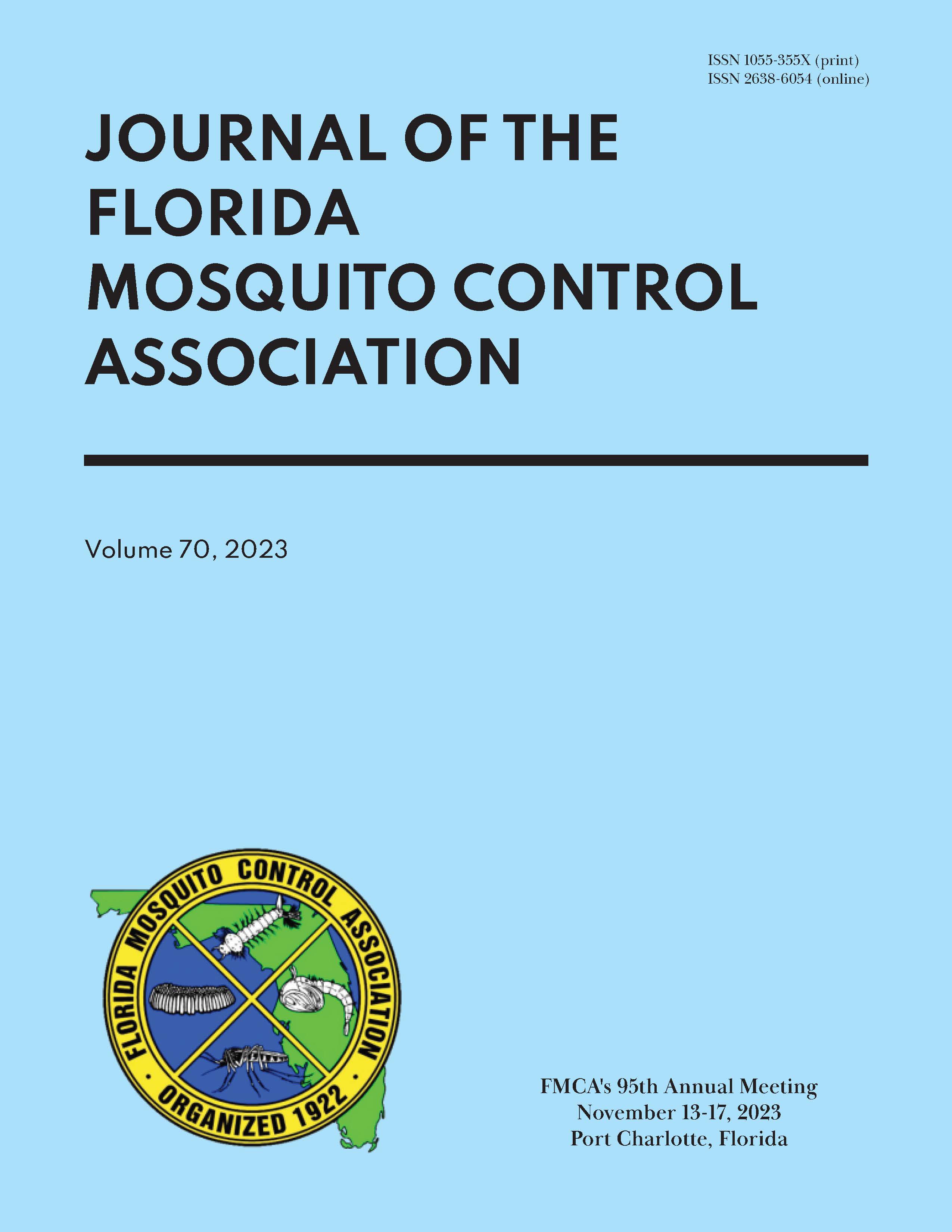EFFECT OF VEGETATION PATTERNS ON EFFICACY OF A GROUND ULV SPRAY OF AQUARESLIN® AGAINST A NATURAL POPULATION OF CULEX PIPIENS PALLENS
DOI:
https://doi.org/10.32473/jfmca.70.1.133842Keywords:
permethrin, ULV spray, habitats, vegetation pattern, parityAbstract
A field study was conducted to evaluate control efficacy of ground ultra-low-volume (ULV applications (Aquareslin® against a natural population of Culex pipiens pallens in three different vegetation areas (dense, open (grassland, and sparsely vegetated in Changping county, Beijing City, China. Over 80% population decline rates (PDRs were achieved from the different vegetation levels. Significantly higher PDR was achieved in the sparsely vegetated habitat compared to the dense and open habitats. Significant higher reduction (% of parity in female mosquitoes was found in the open grassland and sparse vegetation level, compared with the dense vegetation level. Control efficacy of ground ULV spray against a natural population of Cx. pipiens pallens was impacted by the different vegetation levels.

